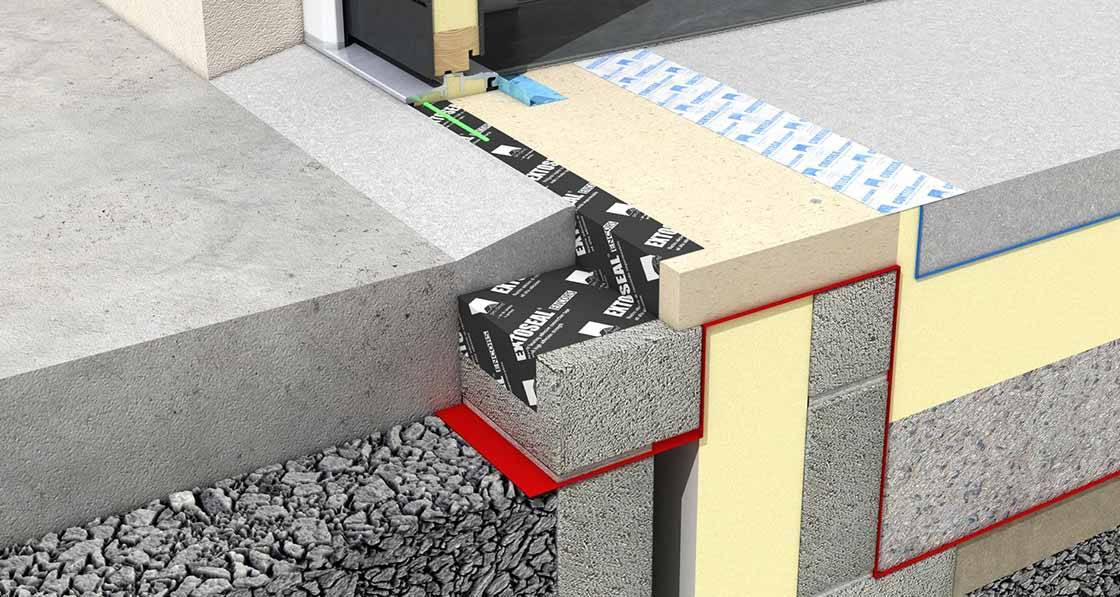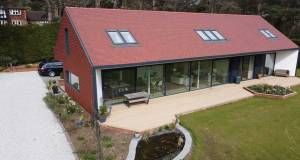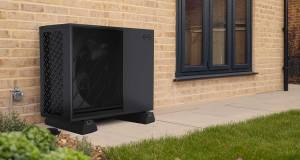
- Marketplace
- Posted
Avoid thermal bridging with Bosig Phonotherm 200 (RG550)
This article was originally published in issue 45 of Passive House Plus magazine. Want immediate access to all back issues and exclusive extra content? Click here to subscribe for as little as €15, or click here to receive the next issue free of charge
These key building junctions present a linear thermal bridge which run along the entire length of each element. The consequences of not addressing a linear thermal bridge are a major cause for concern as warm internal air cools and allows water vapour to condense, potentially resulting in mould growth, building deterioration, and poorer indoor air quality which may have an adverse impact on occupant health.
New windows and doors usually have high thermal resistance and good U-values. They are essentially filling up the holes in the building’s outer envelope, which represents a lot of missing insulation. Despite this, the connection between doors or windows to adjoining insulated building elements is all-too often poor. As a result, heat can find a way out between the high-performance frames and the insulated building and these weak connections between the elements are often the cause of surface mould in the reveals of windows and doors.
What about at thresholds? Take a large sliding door, for example. The considerable weight of this element requires rigid support from beneath with a high compression resistance, such as a layer of concrete. Conventional insulation usually doesn’t have the compression resistance needed to support a heavy sliding door. This poses a risk of a significant thermal bridge where the high-performance door meets the cold concrete. To avoid a linear thermal bridge in this area, structural insulation is needed to separate the frame from the concrete, and that’s where Bosig Phonotherm 200 (RG550) provides the ideal solution.
When measuring heat loss at a linear junction we use the Psi value to describe how much energy in Watts is being lost per metre of a junction for every degree of temperature difference between inside and outside (W/ mK). By contrast, a metre long linear thermal bridge with a Psi value performance of 0.40 W/mK is equivalent to an extra 1 m2 section of wall with a U-value of 0.40 W/m2K. The use of structural insulation such as Bosig Phonotherm 200 (RG550) could result in Psi values improving to 0.04 W/mK or better, thereby reducing heat loss by up to 10 times.
Optimising junctions with load-bearing insulation such as Bosig Phonotherm 200 (RG550) can offset the risk of low temperatures and prevent unnecessary heat loss. Bosig Phonotherm 200 (RG550) insulation board is made entirely from upcycled polyurethane, a material that would typically be disposed of in landfill and does not contain any formaldehyde, and has an independently certified Environmental Product Declaration and well as European Technical Assessment certification.
More information can be found at: https://www.ecologicalbuildingsystems.com/product/phonotherm-200.
Related items
-
 New Ejot profile cuts thermal bridging losses by 25mm insulation equivalent
New Ejot profile cuts thermal bridging losses by 25mm insulation equivalent -
 Build Homes Better updates Isoquick certification to tackle brick support challenge
Build Homes Better updates Isoquick certification to tackle brick support challenge -
 Ecological Building Systems expands UK and Irish straw panel construction with EcoCocon deal
Ecological Building Systems expands UK and Irish straw panel construction with EcoCocon deal -
 Focus on better buildings, not better spreadsheets
Focus on better buildings, not better spreadsheets -
 MBC offers total passive house envelope solutions
MBC offers total passive house envelope solutions -
 Grant’s Aerona R290: A next-gen heat pump designed for the Irish climate
Grant’s Aerona R290: A next-gen heat pump designed for the Irish climate

